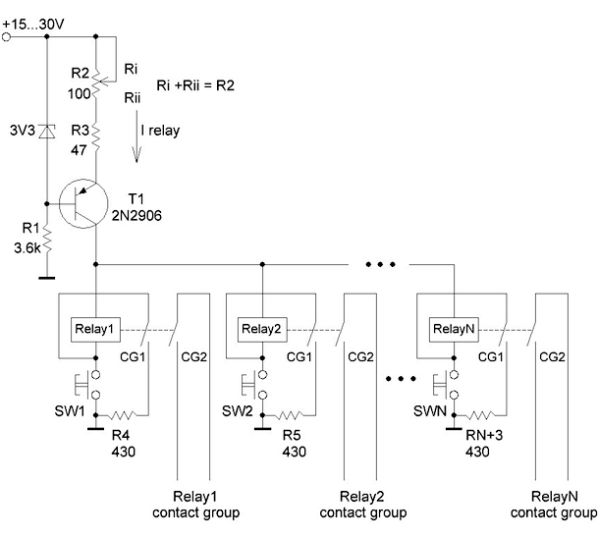Sometimes you may need a group of switches where, if any switch is activated, it deactivates the previously active switch. This Design Idea implements such a function with relays. This “one and only one” function is often implemented as mechanical switches in which an actuator (usually a movable metal bracket) is used to switch contact groups on and off. When any switch is pressed, this bracket first deactivates all switches, then activates the pressed switch.
These switches have a fixed and limited number of positions, and you may need more or less. Using the circuit below, you can make your own one-of-all switch. Contacts CG2 of all relays are used to control the external devices, and CG1 contacts form part of the switching circuitry.
An electromagnetic relay activates when coil current exceeds a value called the pull-in current. It deactivates when its current falls below the drop-out current.
A current instead of a voltage source forms the heart of the circuit. It provides current that is equal (or slightly exceeds) the pull-in current of any relay used in the switch.
For more detail: Exclusively select 1 of N relays

